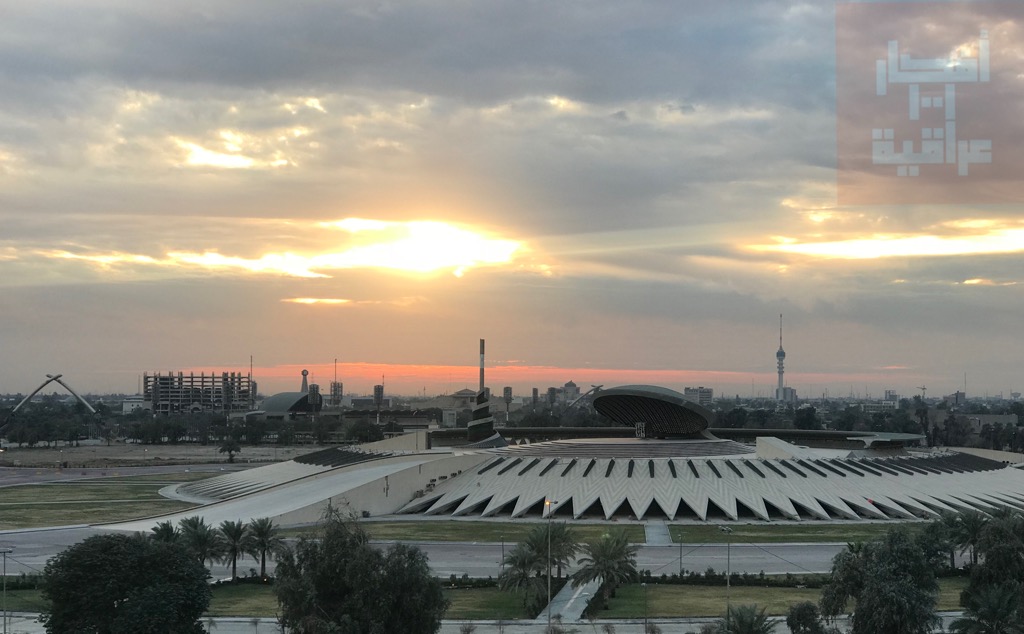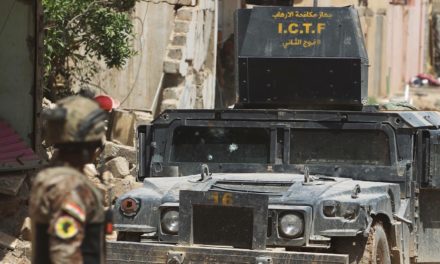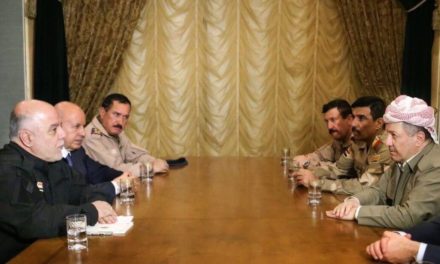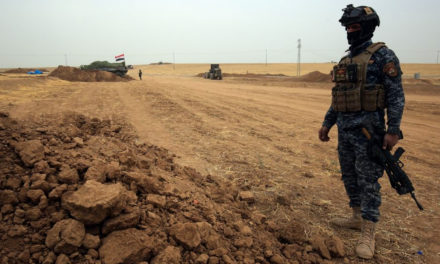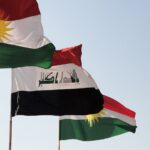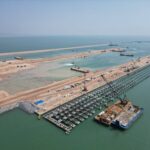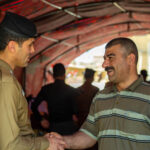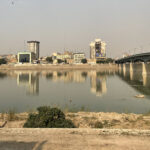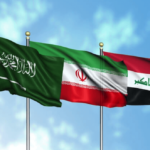(Grand Festivities Square in Baghdad’s Green Zone where Sunday’s Katyusha rocket landed. No injuries or fatalities were incurred. Photo: 1001 Iraq Thoughts)
Sunday evening’s rocket attack near the U.S. embassy in Baghdad left no casualties and many questions. Many Iraq and Iran watchers were quick to call the rocket a message or signal from Iran and its proxies. But what is the signal or message it was designed to deliver? The purpose so far seems unclear, so let’s take a closer look at the facts.
The attack was utterly unimpressive. It employed a single short-range unguided rocket that was fired from a short distance across the Tigris yet landed hundreds of meters from its presumed target without damage.
Was it a warning shot across the bow meant to deter U.S. action against militias in Iraq aligned with Iran? It doesn’t seem like it.
To qualify as a message of deterrence, an attack would have needed to demonstrate, without causing much damage, either a qualitative or a quantitative retaliatory capability to show that the U.S. would be worse off if it chose to go on the offensive.
A qualitative capability would involve a sophisticated or game-changing breakthrough that increases the adversary’s vulnerability to retaliation and could demonstrated in areas such as delivery method (such as long-range projectile, precision, high tech unmanned vehicle, various forms of infiltration), warhead nature (such as explosive yield, unconventional effects).
A quantitative capability would emphasize a show of volume and rapidity (think of the threat that North Korea’s massed conventional tube and rocket artillery poses to Seoul), persistence, or simultaneous attacks from multiple locations to portray a picture of omnipresent threat and, again, create a sense of vulnerability to retaliation.
In either case, an act of deterrence must, without precipitating conflict, communicate to the adversary that offensive action would prove very costly.
The attack on Sunday, however, demonstrated neither. Logically, therefore, the attack was not meant for deterrence.
Was it then an attempt to provoke an American response and precipitate conflict?
If that were the case, the attack would have needed to be clear enough and painful enough to be difficult to ignore, i.e., to force the adversary to act at a time of the provoking party’s choosing by making inaction seem costlier than action. The attack does not fit the provocation scenario either.
For example the attackers could have used a guided anti-tank missile (available to many armed factions in Iraq) to demonstrate capability without causing pain (such as striking a parked, empty vehicle) and thus creating a deterrence effect. The same weapon could be used to its full capability while causing pain (such as by inflicting casualties or damaging critical infrastructure) and thus creating a provocation, forcing the adversary to respond at a time of their choosing.
An attack with a single misguided rocket does not fit either model.
In war in general, and the Middle East in particular, things don’t always have to make sense. There is always the possibility of actions that simply were unintended or poorly thought out, and the factor of incompetence should not to be excluded.
The leaders of several key armed groups, like Qais al-Khazali, were quick to distance themselves from the attack. Kata’ib Hezbollah criticized the attack as “unjustified” and its timing “does not serve public interests.” Hadi al-Amiri said the perpetrators were “either ignorant or outsiders.” These reactions suggest that the attack was potentially an unauthorized act by incompetent or unauthorized individual(s) or group acting on its own.
Another possible interpretation is that the attack was perpetrated by a third party (such as a Baathist or Sunni extremist faction) that perceives benefits from open conflict between the U.S. and militias that wants to provoke Washington to strike the Popular Mobilization Forces. The timing and launch site of the attack (around 8:30 pm, meal time in Ramadhan) suggest the perpetrators were trying to minimize exposure and did not enjoy local cover. This does not support the notion of local security forces being complacent or complicit in the attack.
One more hypothesis is that the attack was indeed a message from Iraqi militias, but of de-escalation instead of provocation or deterrence. By using a primitive weapon in the attack, the militias could be attempting to communicate to Washington that they do not possess the kind of capable missile whose alleged possession was the impetus behind escalation in the first place. This kind of messaging, however, may be too subtle for the militias and less likely than incompetence or the third-party possibilities.
Whatever it was, Sunday’s attack was an act that should not be interpreted based only on circumstantial evidence. Stakeholders and observers should not rush to conclusions.

Omar Al-Nidawi
Omar Al-Nidawi is an Iraq analyst based in Washington D.C. and he is a fellow with the Truman National Security Project. The views expressed here are his own.

